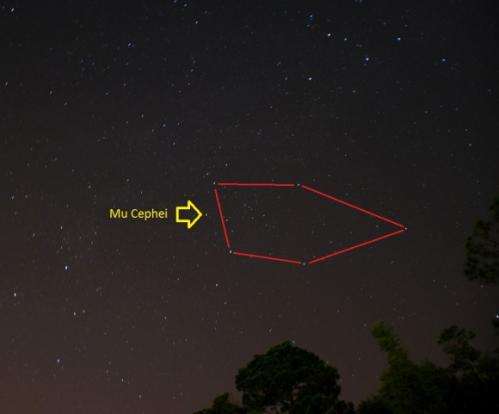Seeing Red: Hunting Herschel's Garnet Star

Quick, what's the reddest star visible to the naked eye?
Depending on your sky conditions, your answer may well be this week's astronomical highlight.
Mu Cephei, also known as Herschel's Garnet Star, is a ruddy gem in the constellation Cepheus near the Cygnus/Lacerta border. A variable star ranging in brightness by a factor of about three-fold from magnitudes 5.0 to 3.7, Mu Cephei is low to the northeast for mid-northern latitude observers in July at dusk, and will be progressively higher as summer wears on.
William Herschel first came across this colorful star, and gave it its nickname while surveying the region in 1783. He noted "A very fine deep garnet color" for the star, and the name stuck. He also went on to describe Mu Cephei as "A most beautiful object, especially if we look for some time at a white star before we turn our telescope to it, such as (+2.5 magnitude) Alpha Cephei, which is near at hand."
Herschel was referring to the color contrast that often occurs when suddenly being confronted with such a visually colorful object in what is often a grey-to-white universe. Curiously, Herschel also notes how earlier stellar cartographers missed this star, perhaps due to its variability. Mu Cephei varies on average over a span of 755 days, although periods as short as 100 days and as long as 12.8 years are also superimposed over the cycle.
Johann Bayer first noted this star with its Greek letter designation of Mu Cephei in the 1600's, although its variable nature was not recorded until 1848 by John Russell Hind. Hind is also famous for the discovery of another ruddy jewel and star party secret weapon, Hind's Crimson Star in the constellation Lepus.
Mu Cephei is also sometimes referred to by the Arabic name Erakis. The name brings to mind the desert world Arrakis of Dune fame, which in the fictional universe of Frank Herbert, orbits around the real world star Canopus. Where the name Erakis comes from isn't immediately clear, although there's conjecture that early star map compilers confused it with Mu Draconis.
Provided by Universe Today




















